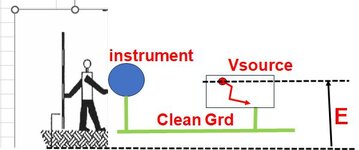thread238-453233
In one of our sites, we have installed a separate clean earthing system (with three earth pits in a triangular formation)for INSTRUMENTATION in the substation building. And around the substation we also have installed several nos. of ELECTRICAL earth pits and LIGHTNING earth pits and connected them together and formed the main grid. The clean earth system is more than 5m away from this main grid. But inside the SIS(satellite Instrument shelter) room in the substation, the ELECTRICAL EARTH(PE)is connected to the CLEAN EARTH BAR with 1no. 70 sq mm cable.
It has been justified as to minimize the high-voltage protentional difference between the SAFETY EARTH and CLEAN EARTH system.
can somebody explain this???????
In one of our sites, we have installed a separate clean earthing system (with three earth pits in a triangular formation)for INSTRUMENTATION in the substation building. And around the substation we also have installed several nos. of ELECTRICAL earth pits and LIGHTNING earth pits and connected them together and formed the main grid. The clean earth system is more than 5m away from this main grid. But inside the SIS(satellite Instrument shelter) room in the substation, the ELECTRICAL EARTH(PE)is connected to the CLEAN EARTH BAR with 1no. 70 sq mm cable.
It has been justified as to minimize the high-voltage protentional difference between the SAFETY EARTH and CLEAN EARTH system.
can somebody explain this???????

